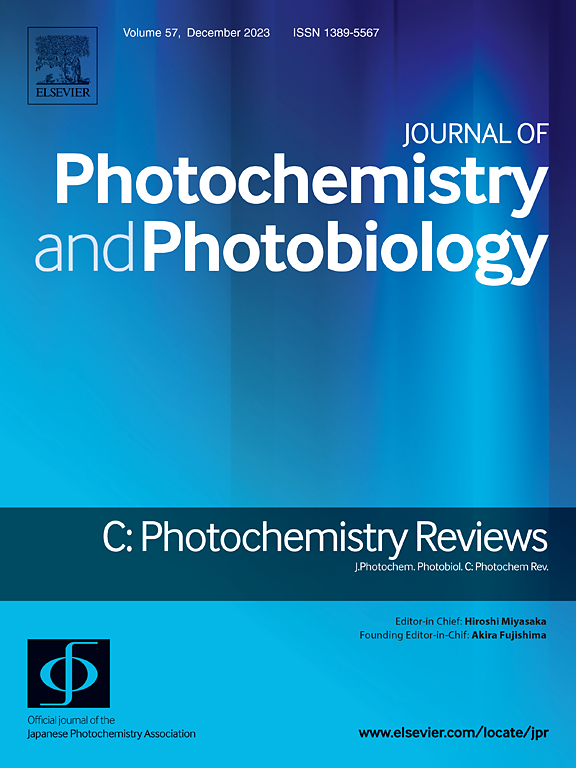Advances of COFs for photocatalytic application: Water splitting, CO2 reduction, H2O2 production, and organic transformation
IF 13.1
1区 化学
Q1 CHEMISTRY, PHYSICAL
Journal of Photochemistry and Photobiology C: Photochemistry Reviews
Pub Date : 2025-07-09
DOI:10.1016/j.jphotochemrev.2025.100712
引用次数: 0
Abstract
The clean conversion of solar energy presents a potential approach to addressing the current energy and environmental predicament. Covalent organic frameworks (COFs) as effective and stable photocatalytic materials possess high crystallinity and porosity, structural and functional adjustability, and pre-designed properties, which are widely employed in the photocatalytic water-splitting resolution to mitigate energy shortage, in the carbon dioxide reduction to combat the greenhouse effect, in the photosynthesis of H2O2 to achieve green chemical production, as well as in the photocatalytic organic conversion to obtain the required organic products. This work systematically summarizes strategies for improving photocatalytic performances and presents a comprehensive review of the recent advancements of COF-based materials in photocatalysis. Furthermore, we provide a brief outlook on unresolved issues in this field, aiming to contribute to a comprehensive comprehension about the advantages and disadvantages of COFs as photocatalysts and inspire scientists to address the challenges that stand in the way of further progress in this field.
COFs在光催化中的应用进展:水分解、CO2还原、H2O2生成和有机转化
太阳能的清洁转换为解决当前的能源和环境困境提供了一个潜在的途径。共价有机框架(COFs)作为一种高效稳定的光催化材料,具有高结晶度和孔隙度、结构和功能可调节性以及预先设计的性能,广泛应用于光催化分解水以缓解能源短缺、减少二氧化碳以对抗温室效应、H2O2光合作用实现绿色化工生产等领域。以及在光催化有机转化中获得所需的有机产物。本文系统地总结了提高光催化性能的策略,并对cof基材料在光催化方面的最新进展进行了全面的综述。此外,我们对该领域尚未解决的问题进行了简要的展望,旨在对COFs作为光催化剂的优缺点有一个全面的了解,并激励科学家们解决阻碍该领域进一步发展的挑战。
本文章由计算机程序翻译,如有差异,请以英文原文为准。
求助全文
约1分钟内获得全文
求助全文
来源期刊
CiteScore
21.90
自引率
0.70%
发文量
36
审稿时长
47 days
期刊介绍:
The Journal of Photochemistry and Photobiology C: Photochemistry Reviews, published by Elsevier, is the official journal of the Japanese Photochemistry Association. It serves as a platform for scientists across various fields of photochemistry to communicate and collaborate, aiming to foster new interdisciplinary research areas. The journal covers a wide scope, including fundamental molecular photochemistry, organic and inorganic photochemistry, photoelectrochemistry, photocatalysis, solar energy conversion, photobiology, and more. It provides a forum for discussing advancements and promoting collaboration in the field of photochemistry.

 求助内容:
求助内容: 应助结果提醒方式:
应助结果提醒方式:


